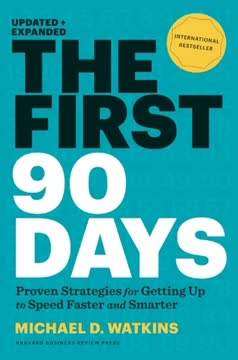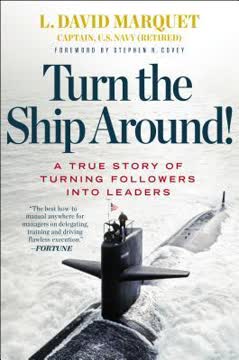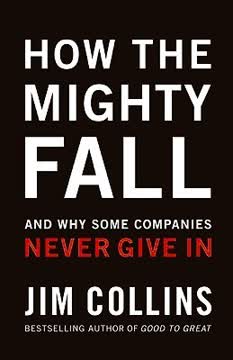Key Takeaways
1. Organizational health trumps everything else in business
The single greatest advantage any company can achieve is organizational health. Yet it is ignored by most leaders even though it is simple, free, and available to anyone who wants it.
Competitive edge. Organizational health provides the context for strategy, finance, marketing, technology, and everything else that happens within a company. It is the single greatest factor determining an organization's success, more important than talent, knowledge, or innovation. Healthy organizations tap into more of their intelligence and capabilities, while unhealthy ones waste resources through politics, confusion, and bureaucracy.
Overcoming biases. Leaders often struggle to embrace organizational health due to three biases:
- The sophistication bias: believing health is too simple to provide real advantage
- The adrenaline bias: preferring quick fixes over slower, more sustainable solutions
- The quantification bias: difficulty in measuring health's impact precisely
To become healthy, organizations must overcome these biases and focus on four key disciplines: building a cohesive team, creating clarity, overcommunicating clarity, and reinforcing clarity through human systems.
2. Build a cohesive leadership team through trust and productive conflict
To hold someone accountable is to care about them enough to risk having them blame you for pointing out their deficiencies.
Vulnerability-based trust. The foundation of a cohesive team is trust, specifically vulnerability-based trust. This occurs when team members are completely comfortable being transparent, honest, and naked with one another. They admit mistakes, ask for help, and acknowledge weaknesses without fear.
To build trust:
- Share personal histories to humanize team members
- Use personality profiling tools to understand differences
- Practice "mining for conflict" to unearth and address disagreements
- Embrace productive conflict around ideas, not personalities
- Achieve commitment through clarity and buy-in, not consensus
- Hold each other accountable for behaviors and performance
Accountability and results. The ultimate goal of a cohesive team is achieving results. Teams must prioritize collective outcomes over individual or departmental interests. Leaders should focus on their "first team" (the leadership team) rather than their own departments to drive overall organizational success.
3. Create clarity by answering six critical questions
If everything is important, nothing is.
Six critical questions. To create clarity, leadership teams must align around answers to six fundamental questions:
- Why do we exist? (Core purpose)
- How do we behave? (Core values)
- What do we do? (Business definition)
- How will we succeed? (Strategic anchors)
- What is most important, right now? (Thematic goal)
- Who must do what? (Defining roles)
Avoiding perfection paralysis. Leaders must resist the temptation to seek perfect answers. It's more important to have directionally correct answers that the team can commit to and act upon. Clarity enables better decision-making, reduces politics, and aligns the entire organization.
Strategic anchors. Identify 3-5 strategic anchors that inform all decisions and provide a filter for evaluating opportunities. These anchors should be unique to the organization and reflect its competitive advantages and core identity.
4. Overcommunicate clarity to align the entire organization
Employees are not analyzing what leaders are saying based solely on whether it is intellectually novel or compelling, but more than anything else on whether they believe the leaders are serious, authentic, and committed to what they are saying.
Repetition is key. Leaders must communicate the organization's clarity (answers to the six questions) repeatedly, consistently, and through multiple channels. Employees need to hear messages at least seven times before they fully internalize them.
Effective communication strategies:
- Cascading communication: Leaders align on messages and share them with their direct reports, who then share with their teams
- Live, interactive communication: Prioritize face-to-face or video meetings over email
- Consistent messaging across the leadership team
- Incorporate key messages in all aspects of organizational life (recruiting, onboarding, performance reviews, etc.)
Authenticity matters. Employees are attuned to whether leaders genuinely believe and are committed to the messages they're sharing. Consistent repetition demonstrates this commitment and helps overcome skepticism.
5. Reinforce clarity through human systems and processes
Human systems are tools for reinforcement of clarity. They give an organization a structure for tying its operations, culture, and management together, even when leaders aren't around to remind people.
Customized systems. Avoid generic, off-the-shelf human systems. Instead, design simple, customized processes that reinforce the organization's unique culture, values, and priorities. Key areas to focus on:
- Recruiting and hiring
- Onboarding and orientation
- Performance management
- Compensation and rewards
- Recognition
- Firing
Values-driven decisions. Use core values as the primary filter for hiring and firing decisions. Be willing to let go of high performers who don't align with the organization's values, as this reinforces the importance of culture.
Simplicity is key. Resist the temptation to overcomplicate human systems. Simple, relevant processes that managers actually use are far more effective than sophisticated but ignored systems.
6. Master the four types of meetings for organizational effectiveness
The fact is that the human brain isn't meant to process so many disparate topics in one sitting. There needs to be greater clarity and focus, which means that there needs to be different kinds of meetings for different kinds of issues.
Four essential meetings:
- Daily Check-In (5-10 minutes): Share daily schedules and priorities
- Weekly Tactical (45-90 minutes): Review weekly priorities and metrics, solve tactical problems
- Ad Hoc Strategic (2-4 hours): Dive deep into critical issues that require more time and preparation
- Quarterly Off-Site Review (1-2 days): Review strategy, team performance, and industry trends
Real-time agendas. For weekly tactical meetings, create the agenda in real-time based on team members' priorities and a review of key metrics. This ensures the team focuses on the most pressing issues.
Separate strategy from tactics. Dedicate separate meetings to strategic issues to give them the time and focus they deserve. This prevents critical long-term discussions from being squeezed out by day-to-day tactical concerns.
7. Embrace simplicity and avoid bureaucracy in all aspects of organizational health
The best performance management programs—you guessed it—are simple.
Simplicity as a guiding principle. Throughout all aspects of organizational health, prioritize simplicity over complexity. This applies to communication, human systems, meetings, and decision-making processes.
Benefits of simplicity:
- Easier adoption and consistent use by employees
- Greater focus on what truly matters
- Reduced bureaucracy and administrative overhead
- Increased agility and responsiveness to change
Leadership involvement. Leaders must actively participate in designing and implementing simple, effective systems. Avoid delegating these crucial tasks entirely to HR or other departments, as this often results in overly complex, generic processes.
Continuous improvement. Regularly review and refine organizational health practices to ensure they remain simple, relevant, and effective. Be willing to eliminate or modify processes that have become overly bureaucratic or no longer serve their intended purpose.
Last updated:
FAQ
What's "The Advantage: Why Organizational Health Trumps Everything Else In Business" about?
- Focus on Organizational Health: The book emphasizes that the greatest advantage any company can achieve is organizational health, which is often overlooked despite being simple and accessible.
- Four Disciplines Model: It introduces a model consisting of four disciplines: building a cohesive leadership team, creating clarity, overcommunicating clarity, and reinforcing clarity.
- Practical Guide: Unlike Lencioni's other books, this is not a fable but a comprehensive guide using real-world examples and client stories to illustrate the concepts.
- Integration of Concepts: The book integrates ideas from Lencioni's previous works, focusing on practical approaches to improving organizational health.
Why should I read "The Advantage: Why Organizational Health Trumps Everything Else In Business"?
- Competitive Advantage: Understanding and implementing organizational health can provide a significant competitive edge over others who focus solely on traditional business metrics.
- Practical Application: The book offers actionable steps and real-world examples, making it easier to apply the concepts in various organizational settings.
- Comprehensive Framework: It provides a structured approach to addressing common organizational dysfunctions, making it a valuable resource for leaders.
- Improved Work Environment: By focusing on health, organizations can reduce politics and confusion, leading to higher morale and productivity.
What are the key takeaways of "The Advantage: Why Organizational Health Trumps Everything Else In Business"?
- Organizational Health is Key: The book argues that organizational health is the most significant advantage a company can have, surpassing traditional metrics like strategy and finance.
- Four Disciplines: The four disciplines—building a cohesive leadership team, creating clarity, overcommunicating clarity, and reinforcing clarity—are essential for achieving organizational health.
- Leadership's Role: The leader's active involvement is crucial in driving organizational health, from building trust to reinforcing clarity.
- Practical Implementation: The book provides a step-by-step guide to implementing these disciplines, emphasizing the importance of communication and alignment.
What are the best quotes from "The Advantage: Why Organizational Health Trumps Everything Else In Business" and what do they mean?
- "The single greatest advantage any company can achieve is organizational health." This quote underscores the book's central thesis that health is more critical than traditional business metrics.
- "If everything is important, nothing is." This highlights the need for focus and prioritization within an organization to avoid being overwhelmed by competing objectives.
- "A good plan violently executed today is better than a perfect plan executed next week." This emphasizes the importance of decisiveness and action over waiting for the perfect solution.
- "Trust is the foundation of real teamwork." This quote reflects the importance of vulnerability-based trust as the cornerstone of a cohesive leadership team.
What is the Four Disciplines Model in "The Advantage"?
- Discipline 1: Build a Cohesive Leadership Team: Focuses on building trust, mastering conflict, achieving commitment, embracing accountability, and focusing on results.
- Discipline 2: Create Clarity: Involves answering six critical questions to ensure alignment and eliminate confusion within the organization.
- Discipline 3: Overcommunicate Clarity: Emphasizes the need for leaders to repeatedly communicate the organization's clarity to ensure understanding and alignment.
- Discipline 4: Reinforce Clarity: Involves embedding clarity into the organization's processes, from hiring to performance management, to sustain health over time.
How does Patrick Lencioni define organizational health in "The Advantage"?
- Integrity and Consistency: Organizational health is about integrity, meaning the organization is whole, consistent, and complete in its management, operations, strategy, and culture.
- Smart vs. Healthy: While being smart involves traditional business metrics like strategy and finance, being healthy involves minimal politics, high morale, and low turnover.
- Multiplier Effect: A healthy organization can better leverage its intelligence, leading to improved decision-making and performance.
- Cultural Impact: Health impacts not just the organization but also its employees, leading to a more fulfilling work environment.
What are the six critical questions for creating clarity in "The Advantage"?
- Why do we exist? This question helps define the organization's core purpose and reason for being.
- How do we behave? Focuses on identifying core values that guide employee behavior and decision-making.
- What do we do? A straightforward description of the organization's business activities.
- How will we succeed? Involves identifying strategic anchors that guide decision-making and differentiate the organization.
- What is most important, right now? Helps prioritize the organization's focus to avoid being overwhelmed by competing objectives.
- Who must do what? Clarifies roles and responsibilities to ensure alignment and accountability.
How does "The Advantage" suggest building a cohesive leadership team?
- Trust Building: Encourages vulnerability-based trust where team members are open and honest about their weaknesses and mistakes.
- Mastering Conflict: Promotes productive ideological conflict to ensure the best ideas are considered and debated.
- Achieving Commitment: Ensures that all team members are committed to decisions, even if they initially disagreed.
- Embracing Accountability: Encourages peer-to-peer accountability to maintain focus and adherence to commitments.
- Focusing on Results: Emphasizes the importance of collective goals and measuring success based on organizational achievements.
What role does communication play in "The Advantage"?
- Overcommunication is Key: Leaders must repeatedly communicate the organization's clarity to ensure understanding and alignment.
- Cascading Communication: Involves leaders communicating key messages to their direct reports, who then pass them down the organization.
- Consistency and Authenticity: Messages should be consistent and authentic to build trust and credibility with employees.
- Multiple Channels: Effective communication requires using various channels, including face-to-face interactions, to reinforce key messages.
How does "The Advantage" address the issue of meetings?
- Meeting Stew: Warns against combining different types of discussions into one meeting, which leads to confusion and inefficiency.
- Four Types of Meetings: Recommends daily check-ins, tactical staff meetings, adhoc topical meetings, and quarterly off-site reviews to address different needs.
- Real-Time Agendas: Suggests creating agendas during meetings based on current priorities rather than pre-set topics.
- Focus on Resolution: Emphasizes the importance of driving issues to closure and making decisions during meetings to avoid unnecessary follow-ups.
What is the significance of the thematic goal in "The Advantage"?
- Singular Focus: The thematic goal provides a single top priority for the organization, ensuring focus and alignment.
- Temporary and Shared: It is a temporary goal, usually lasting 3 to 12 months, and is shared across the leadership team.
- Defining Objectives: Thematic goals are supported by defining objectives that outline the activities needed to achieve the goal.
- Avoiding Silos: By focusing on a single goal, organizations can reduce silos and ensure that all departments work towards the same objective.
How does "The Advantage" suggest reinforcing clarity within an organization?
- Human Systems: Embedding clarity into processes like hiring, performance management, and compensation to sustain organizational health.
- Non-Generic Processes: Customizing systems to reflect the organization's unique culture and values rather than adopting generic solutions.
- Leadership Involvement: Leaders must actively participate in designing and reinforcing these systems to ensure alignment with organizational clarity.
- Simplicity and Relevance: Systems should be simple and relevant, focusing on reinforcing the organization's clarity rather than adding bureaucracy.
Review Summary
The Advantage is a practical guide to organizational health that emphasizes building cohesive leadership teams, creating clarity, and reinforcing company values. Readers appreciate Lencioni's straightforward approach and actionable advice, though some find it repetitive or overly simplistic. The book's focus on trust, communication, and alignment resonates with many leaders. While some criticize the writing style, most agree that the principles are valuable for improving organizational effectiveness. Overall, it's considered a useful resource for managers and executives seeking to enhance their company's culture and performance.
Similar Books









Download PDF
Download EPUB
.epub digital book format is ideal for reading ebooks on phones, tablets, and e-readers.













